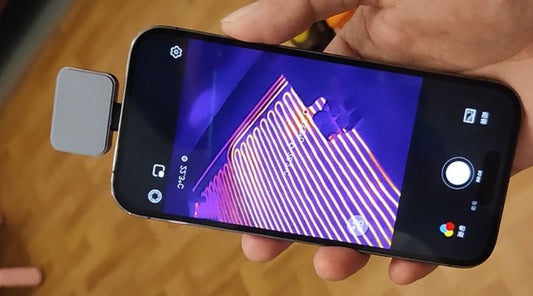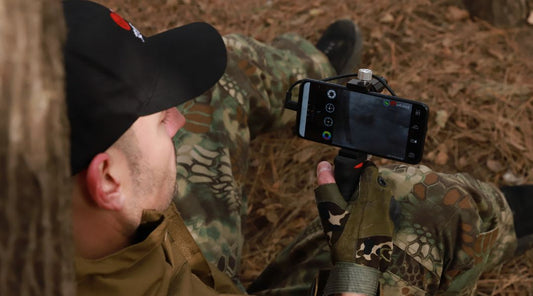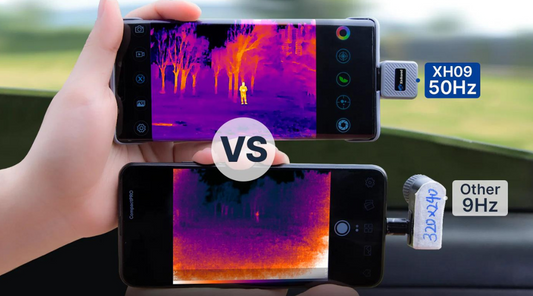Unleashing the Power of Thermal Imaging in Pest Defense
Imagine you're in charge of safeguarding a massive crop field, a bustling food processing plant, or even a cozy suburban home. Now, imagine dealing with an infestation of pests that seem to be impossible to detect with the naked eye. In such scenarios, the hero that comes to your rescue is not a person in a cape, but rather a high-tech wizard – thermal imaging.
How Does Thermal Imaging Work
Before we leap into the pest-fighting arena, let's get to know our superhero – thermal imaging. Essentially, these cameras allow us to see temperature differences in the form of vivid, color-coded images. It's like having the ability to see in the dark, but instead of night vision goggles, we use thermal cameras. These cameras detect the infrared radiation emitted by objects, which is directly proportional to their temperature. So, the hotter an object is, the brighter it appears in the thermal image.

Pest Control Challenges
We all know that pests can be a real headache. Whether it's insects, rodents, or other critters, they can wreak havoc on our crops, contaminate our food, and invade our spaces. Traditional pest control methods often fall short in effectively identifying and eliminating these pests. That's where thermal imaging steps in, addressing some common challenges:
- Stealthy Pests: Many pests are elusive and hide in nooks and crannies, making them difficult to spot.
- Nocturnal Activity: Some pests are night owls, making it nearly impossible to catch them in the act during the day.
- Hidden Infestations: Pests may infest walls, ceilings, or underground areas, making it hard to pinpoint their exact location.

Leveraging Thermal Imaging in Pest Defense
Now, let's talk about how thermal imaging has become our pest-fighting sidekick.
- Early Pest Detection: Thermal cameras can pick up heat signatures, even in complete darkness. This means they can identify pests based on their body heat, making it possible to detect infestations at an early stage.
- Monitoring and Tracking: These cameras can also track the movement of pests in real time. You can literally watch a pest's path of destruction unfold on the thermal monocular screen.
- Integrating with Existing Methods: Thermal imaging can complement traditional pest control methods. For instance, you can strategically place traps and baits based on the thermal images to improve their effectiveness.

Benefits of Thermal Imaging in Pest Defense
The use of thermal imaging in pest control offers several remarkable advantages:
- Enhanced Accuracy: Thermal imaging provides a clear and accurate view of the pests' whereabouts, reducing the chances of false positives.
- Cost-Effective: Early detection means less damage and lower treatment costs. It's like treating a disease in its early stages.
- Eco-Friendly: Fewer chemicals are needed when you can pinpoint the location of pests accurately, reducing environmental impact.
- Safety: Pest control professionals can work more safely when they know exactly where pests are hiding, minimizing exposure to potentially harmful chemicals.
Industries Benefiting from Thermal Imaging in Pest Defense
This superhero technology has found its place in various industries:
- Agriculture: Farmers use thermal imaging to protect their crops from voracious insects and rodents.
- Food Processing: In the food industry, a thermal imager ensures that pests do not infiltrate the production process, maintaining food safety.
- Residential: In homes, thermal cameras are a game-changer for pest control, especially in the case of bed bugs or rodents.
- Construction: Thermal imaging is also handy in construction to prevent pest-related damage to structures.

Tips for Implementing Thermal Imaging in Pest Control
To get the most out of thermal imaging in pest defense, keep these tips in mind:
- Training: Ensure that your pest control personnel are trained in using thermal cameras effectively.
- Maintenance: Regularly calibrate and maintain your thermal cameras to ensure accurate readings.
- Customized Strategies: Develop a customized pest control strategy based on the data provided by thermal imaging.
Future Trends and Innovations
The future of pest control is exciting! Emerging technologies in thermal imaging are continuously improving, offering even more precision and efficiency. Imagine a world where pests can be detected and eliminated with pinpoint accuracy.
In the world of pest defense, thermal monocular imaging emerges as a powerful ally, offering unprecedented advantages in early detection, cost-effectiveness, and eco-friendliness. It's time to embrace this technological superhero to protect our crops, food, homes, and industries from the sneakiest of pests.
So, the next time you spot something creeping into the dark corners of your domain, remember that thermal imaging is there to unveil the mystery and save the day!




